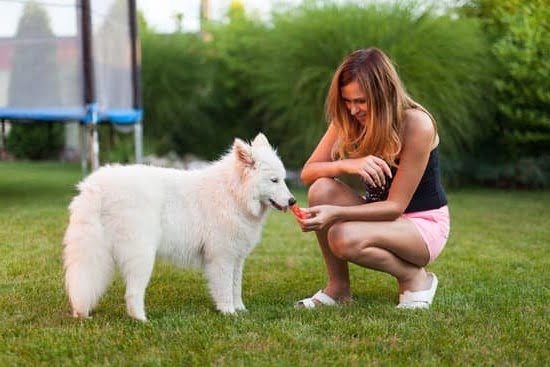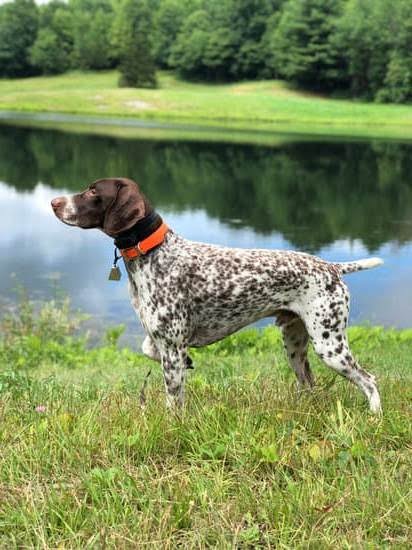Are you wondering how to train a dog to find sheds? Shed hunting, the act of searching for antlers that have been naturally shed by deer, elk, and other animals, has gained popularity among outdoor enthusiasts.
One of the most effective ways to excel at this activity is by training a dog to assist with the search. In this article, we will explore the importance of shed hunting for dog owners and provide valuable tips on how to train your furry companion for this rewarding pursuit.
The innate abilities of dogs make them exceptional partners for shed hunting. With their heightened sense of smell and natural instincts as hunters, dogs can be trained to locate hidden antlers with precision. Understanding these natural instincts and learning how to harness them in shed hunting is crucial for successful training. Additionally, choosing the right breed with suitable characteristics for shed hunting can significantly impact your training journey.
As an owner looking to embark on this adventure with your canine companion, it is essential to equip yourself with the necessary knowledge and tools. From selecting the appropriate training equipment to understanding the step-by-step process of teaching your dog to sniff out sheds, each aspect plays a pivotal role in preparing both you and your dog for a successful shed hunting experience.
Understanding a Dog’s Natural Instincts and How They Can Be Used for Shed Hunting
Dogs have an incredible sense of smell, which makes them perfect candidates for shed hunting. Their natural instincts, particularly their keen sense of smell and hunting abilities, can be honed to make them proficient in finding sheds. Dogs have been used for hunting for centuries, and this natural ability can be translated into the activity of shed hunting.
One of the primary natural instincts that dogs use for shed hunting is their sense of smell. A dog’s nose contains up to 300 million scent receptors, as opposed to humans who only have around 5 million scent receptors.
This means that dogs have an incredibly strong sense of smell, making them well-suited for identifying the scent of antlers in the woods. Additionally, dogs also have a natural prey drive and enjoy using their senses to track down prey, making shed hunting an engaging and rewarding activity for them.
Another important aspect of a dog’s natural instincts that can be tapped into for shed hunting is their drive to work alongside humans. Dogs are pack animals and are naturally inclined to work with their human companions. This desire to please and work together with their owners can be channeled into an effective partnership for shed hunting. By understanding these natural instincts, dog owners can better train and guide their furry friends in becoming successful shed hunters.
Choosing the Right Dog for Shed Hunting
Understanding Breed Characteristics
When it comes to shed hunting, not all dog breeds are created equal. Some breeds are naturally more predisposed to excel in this activity due to their instincts and characteristics.
Breeds such as Labrador Retrievers, German Shepherds, Golden Retrievers, and English Springer Spaniels are known for their superior scenting abilities, high energy levels, and intelligence, making them ideal candidates for shed hunting. On the other hand, breeds that were originally bred for tracking and hunting, such as Bloodhounds and Beagles, may also be well-suited for shed hunting due to their exceptional sense of smell.
Evaluating Your Dog’s Individual Traits
While breed characteristics can give a general idea of which dogs are best suited for shed hunting, it’s important to evaluate your individual dog’s traits before embarking on training. Consider factors such as your dog’s age, health, energy level, drive to hunt, and willingness to learn. A dog that exhibits strong play and prey drive is likely to be more successful in shed hunting training compared to one with low energy and motivation.
The Importance of Temperament
In addition to physical traits and instincts, a dog’s temperament plays a crucial role in determining its suitability for shed hunting. Dogs that are naturally independent, curious, and possess a strong desire to work alongside their owners tend to thrive in shed hunting activities.
Conversely, timid or anxious dogs may struggle with the demands of shed hunting training. Understanding these key breed characteristics and individual traits will help you make an informed decision when choosing the right dog for shed hunting.
Essential Training Equipment for Shed Hunting With Your Dog
When training your dog for shed hunting, having the right equipment is crucial in ensuring that your training sessions are effective and successful. Here are some essential training equipment that you will need:
1. Dog Training Whistle: A whistle is a useful tool for communicating with your dog during training sessions. It can be used to get your dog’s attention, signal commands, and redirect their focus when necessary.
2. Scent Training Aids: Scent training aids such as shed antlers or synthetic antler scents are essential for teaching your dog to recognize the scent of sheds. These aids can be used to create scent trails or hidden in various locations to simulate real hunting scenarios.
3. Training Dummy/Bumper: Using a dummy or bumper can help train your dog to retrieve sheds once they have located them. This will also teach them to handle the sheds gently without causing any damage.
4. Long Line or Check Cord: A long line or check cord is important for maintaining control over your dog during training exercises, especially when working on distance commands and recall.
5. Harness or Vest: A specially designed harness or vest can be useful for attaching a GPS tracker or other safety equipment to ensure that your dog is safe and secure during shed hunting expeditions.
By investing in the right training equipment, you can set yourself and your dog up for success in shed hunting training. These tools will not only aid in teaching and reinforcing essential skills but also ensure the safety and well-being of your canine companion throughout the process.
Step-by-Step Training Process
Teaching your dog to find sheds can be an exciting and rewarding experience for both you and your furry companion. The step-by-step training process involves patience, consistency, and positive reinforcement to help your dog develop the skills needed for shed hunting.
The first step in the training process is to introduce your dog to the scent of sheds. You can start by using shed antlers that have been soaked in deer blood or a commercially available scent product designed specifically for shed hunting. Allow your dog to sniff and investigate the scent to pique their curiosity and associate it with a positive experience.
Once your dog has shown interest in the shed scent, begin incorporating basic commands such as “search” or “find it” during training sessions. Use these commands while placing shed antlers in plain sight for your dog to discover. Reinforce their actions with praise, treats, or toys to create a positive association with finding sheds.
As your dog becomes more proficient at locating sheds, gradually increase the difficulty by hiding the antlers in different terrains or environments. This will help them develop problem-solving skills and adaptability when searching for sheds outdoors. Consistent practice and patience are key during this training process, as every dog learns at their own pace. Remember to keep training sessions short and enjoyable for your dog to maintain their enthusiasm for shed hunting.
| Training Process | Description |
|---|---|
| Introduce Shed Scent | Allow your dog to sniff shed antler scent and associate it with a positive experience. |
| Incorporate Basic Commands | Use commands like “search” or “find it” while placing antlers in plain sight for your dog. |
| Gradually Increase Difficulty | Hide antlers in different terrains or environments to enhance problem-solving skills. |
Advanced Techniques for Refining Your Dog’s Shed Hunting Skills
Once your dog has mastered the basic skills of shed hunting, you may want to consider advanced techniques to further refine their abilities. These techniques will help sharpen your dog’s focus and improve their efficiency in finding sheds.
Here are some advanced techniques for refining your dog’s shed hunting skills:
1. Scent Discrimination: Teach your dog to differentiate between the scent of a shed antler and other distracting scents. You can do this by using multiple sheds with different scents and rewarding your dog when they correctly identify the shed antler scent.
2. Distance Control: Work on training your dog to search for sheds over longer distances. Start with shorter distances and gradually increase the range, using visual or verbal cues to guide them in the right direction.
3. Scenario Training: Create simulated hunting scenarios to mimic real-life conditions. This could include hiding sheds in various terrains, elevations, or weather conditions, challenging your dog to adapt their searching technique.
By incorporating these advanced techniques into your training regimen, you can help your dog become an expert shed hunter with a keen sense of smell and exceptional tracking abilities. Remember to be patient and consistent with their training, as it takes time and practice to perfect these skills. With dedication and perseverance, you’ll be rewarded with a reliable shed hunting companion.
Common Challenges and How to Overcome Them in Shed Hunting Training
Distractions
One common challenge in shed hunting training is dealing with distractions that can interfere with your dog’s focus. This could include other animals, unfamiliar scents, or even environmental stimuli like noise or movement. To overcome this challenge, it is important to start training in a controlled environment and gradually introduce distractions as your dog becomes more proficient at finding sheds. Use positive reinforcement techniques to redirect your dog’s attention back to the task at hand when distractions arise.
Lack of Interest
Some dogs may initially lack interest in shed hunting, especially if they have not been exposed to it before. If you are encountering this challenge, it is important to make the training sessions enjoyable and rewarding for your dog. Consider using high-value treats or toys to incentivize your dog’s participation in shed hunting activities. Additionally, incorporating games and play into the training process can help pique your dog’s interest and enthusiasm for shed hunting.
Weather Conditions
Weather can also pose a challenge for shed hunting training, particularly if you live in an area with extreme temperatures or frequent precipitation. Training sessions may need to be adjusted based on the weather conditions, and it is important to ensure that your dog is comfortable and safe during these sessions.
This might mean shortening training sessions during hot weather or investing in protective gear for cold and wet conditions. Adapting the training approach to accommodate different weather conditions can help minimize potential challenges in shed hunting training.
The Rewards of Shed Hunting
The bond between a dog and its owner is a special and powerful connection, and shed hunting can further strengthen this relationship. Engaging in shed hunting with your dog not only provides physical exercise for both of you but also builds trust and teamwork. As you work together to find sheds, you are reinforcing the natural instincts of your dog, fostering their loyalty, and deepening your emotional connection.
By spending time outdoors with your dog in pursuit of sheds, you are creating lasting memories and shared experiences that will enhance your bond. The shared excitement of locating a shed or the satisfaction of successfully completing a training session can create a strong sense of unity between you and your dog. This shared activity can lead to increased mutual understanding, communication, and overall companionship.
Furthermore, the rewards of shed hunting extend beyond the emotional connection with your dog. As an owner, by working together with your furry companion in this activity, you are ensuring that they receive adequate mental stimulation and physical exercise.
This can lead to a happier, healthier, and well-balanced dog who is more obedient at home and more content overall. The sense of achievement experienced by both owner and dog during shed hunting sessions can also boost confidence in each other’s abilities, ultimately strengthening the bond between you.
| Rewards of Shed Hunting | Building a Stronger Bond With Your Dog |
|---|---|
| Increased mutual understanding | Emotional connection |
| Mental stimulation for the dog | Physical exercise for both owner and dog |
Conclusion
In conclusion, shed hunting can be a rewarding activity for both dog owners and their furry companions. By understanding a dog’s natural instincts and choosing the right breed for shed hunting, you can effectively train your dog to sniff out sheds.
With the use of essential training equipment and a step-by-step training process, you can teach your dog to become an expert shed hunter. Additionally, by using advanced techniques and overcoming common challenges, you can refine your dog’s shed hunting skills and build a stronger bond with your pet.
It is important to remember that successful shed hunting with your trained dog requires patience, perseverance, and consistent training. It is also crucial to provide positive reinforcement and rewards for your dog throughout the training process. This will not only enhance their performance but also strengthen the bond between you and your pet. Furthermore, always prioritize the safety and well-being of your dog during shed hunting expeditions.
Overall, shed hunting with a trained dog can be a fun and fulfilling experience that allows you to explore nature while witnessing your pet’s incredible abilities. Whether it’s finding antlers or other treasures hidden in the wilderness, the journey of shed hunting with your trained dog is one that fosters teamwork and creates lasting memories.
So, if you are willing to put in the effort and dedication required for this specialized training, the rewards of having a skilled shed-hunting companion will certainly be worth it in the end.
Frequently Asked Questions
How Do I Teach My Dog to Find a Shed?
Teaching your dog to find a shed starts with basic obedience training. You’ll need to work on commands like “sit,” “stay,” and “come” to ensure that your dog can listen and follow instructions in the field.
Then, you can start introducing the shed antler scent while playing hide and seek with the shed in a controlled environment. Slowly, you can progress to outdoor searches in different terrains to help your dog learn how to find sheds on its own.
How Do I Start Hunting With My Dog?
Starting hunting with your dog requires careful consideration of their breed, health, and training. It’s important to introduce your dog to gun sounds and get them comfortable around other dogs before heading out for a hunt.
Training them to follow commands such as “search,” “retrieve,” and “stay” is essential for a successful hunting experience. Additionally, proper gear like protective vests and leashes will ensure both you and your dog are prepared for the hunt.
How Long Does It Take to Train a Dog to Hunt?
The length of time it takes to train a dog to hunt depends on various factors such as the breed, age, and previous training experience of the dog. On average, it can take several months of consistent training for a dog to become proficient at hunting.
This includes obedience training, field work, exposure to different environments, and practicing retrieval skills. Patience, positive reinforcement, and regular practice sessions are key elements in successfully training a dog for hunting purposes.

Welcome to the blog! I am a professional dog trainer and have been working with dogs for many years. In this blog, I will be discussing various topics related to dog training, including tips, tricks, and advice. I hope you find this information helpful and informative. Thanks for reading!





